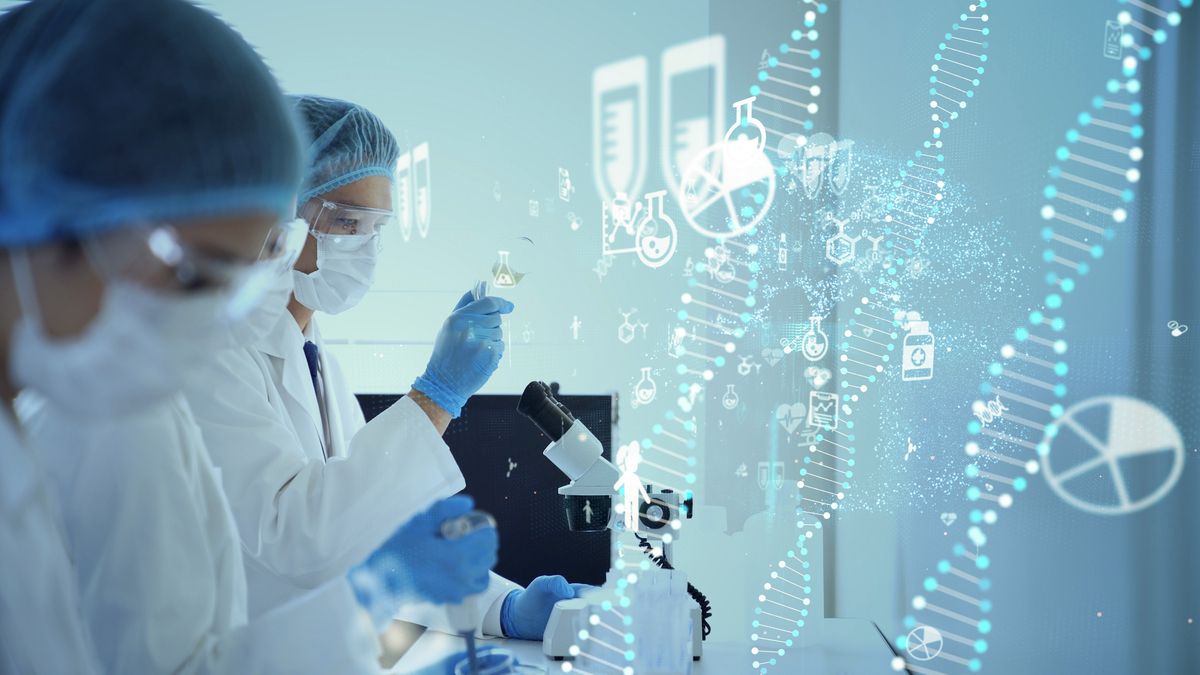Alnylam Pharmaceuticals' (ALNY +0.00%) results from the first three months of 2019 exceeded expectations. That's why a lot of frustrated investors were scratching their heads as the stock dipped about 7% following the company's first-quarter earnings call.
By most accounts, 2019 has already been a banner year, but Alnylam's stock price is still around 11% lower than it was in early 2014. Is there any chance this biotech favorite can climb to new heights?

Image source: Getty Images.
What's it take to get some respect around here?
Overall, the first three months of 2019 were sensational. Total revenue rose 52% compared with the previous year to $33.3 million, which was $11.7 million more than consensus estimates. The company also reported a much smaller loss than expected.
Last year Alnylam launched Onpattro, an RNA interference drug to slow the progression of nerve damage caused by transthyretin amyloidosis (hATTR), and the last three months of 2018 was the drug's first full quarter post-approval. During the first quarter, Alnylam doubled the number of Onpattro customers to 400 from 200 at the end of December. Compared with the previous three months, first-quarter sales more than doubled to $26.3 million.
April showers
April was full of good news for Alnylam. First, Regeneron (REGN 1.20%) entered a collaboration deal with Alnylam to discover and commercialize new drugs to treat disorders of the eye, nervous system, and liver. The larger biotech gave Alnylam $400 million upfront and bought 4.4 million new shares for another $400 million. The partners are going after 30 different targets, and plan on moving a lot of potential new drugs into clinical trials over the next five years.
Alnylam also posted positive results from a phase 3 study with givosiran, a potential new treatment for acute hepatic porphyria (AHP). This is a collection of rare genetic disorders that lead to excruciating pain and weeks of hospitalization multiple times each year. Givosiran reduced a majority of patients' annual rate of painful attacks by 90% or better, and an approval in 2020 seems likely.
Just a few days after givosiran succeeded, Alnylam began a phase 3 pediatric study with lumasiran for primary hyperoxaluria type 1 (PH1) patients. Children with this ultrarare disorder produce too much oxalate that forms recurrent kidney stones and leads to a complete loss of kidney function at a relatively young age. At the moment, the best available treatment option is a combined liver-and-kidney transplant before too much damage beyond these organs sets in.
Across three doses tested, treatment with lumasiran lowered urinary oxalate levels 72% on average, and the treatment was a lot easier to tolerate than a double-organ transplant procedure. If lumasiran repeats these results, as expected in the ongoing phase 3 study, Alnylam could chalk up a third new drug approval in 2021.

Image source: Getty Images.
Why the stock fell
Alnylam stock slipped after its first-quarter earnings call partly because all the good pipeline development news in April had already been digested. That allowed investors to focus on the company's plans to boost annual research and development (R&D) spending from a range provided a few months ago that was between $520 million and $560 million, up to a new range between $550 million and $590 million.
The day before Alnylam let on that expenses were rising, the company's market cap was $9.5 billion even though it's still bleeding money. Rapidly expanding operations lost $814 million last year thanks in part to R&D expenses that climbed to $505 million. With Onpattro sales expected to reach less than $200 million in 2019, the last thing investors wanted to hear about was increasing expenses.
Can it climb again?
Onpattro is approved to treat an extremely small group of patients, and the rest of Alnylam's late-stage pipeline is aimed at indications that are even less common. That doesn't mean they can't produce significant sales, but perhaps not quite enough to support the company's present valuation. Commercial stage biotech stocks generally trade at mid-single-digit multiples of annual sales, which means Onpattro, lumasiran, and givosiran need to meet some extremely lofty expectations in a short time.
Although Alnylam's stock price is lower now than a peak reached more than five years ago, the company's market cap is 49% higher, thanks to an ambitious pipeline and eager equity markets. Luckily, there's still a good chance the company will be able to narrow the gap between sales revenues and operating expenses before its enormous cash pile evaporates.
Once Regeneron pumps another $800 million into Alnylam's coffers, the smaller company will have more than $2 billion in cash and securities. There's still a lot that can go wrong, but the odds that Alnylam can live up to the latest expectations placed on it, and start climbing again, are stronger than ever.







